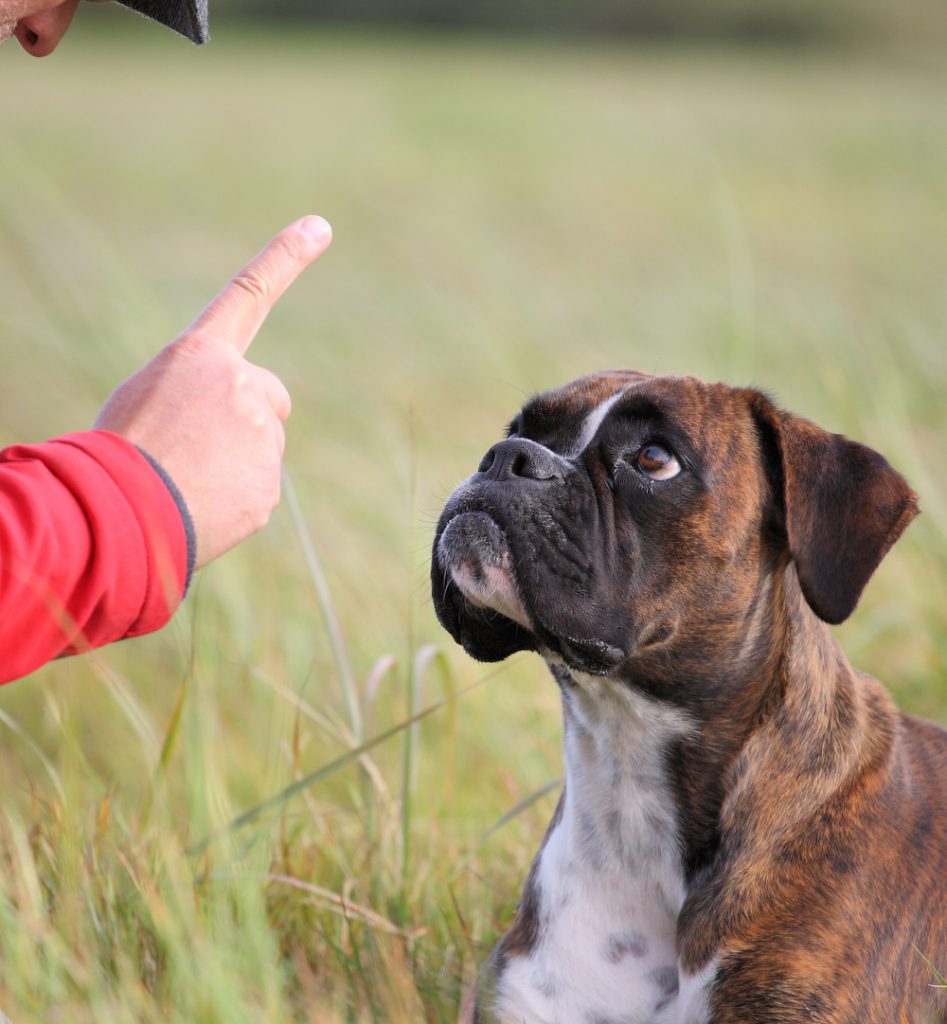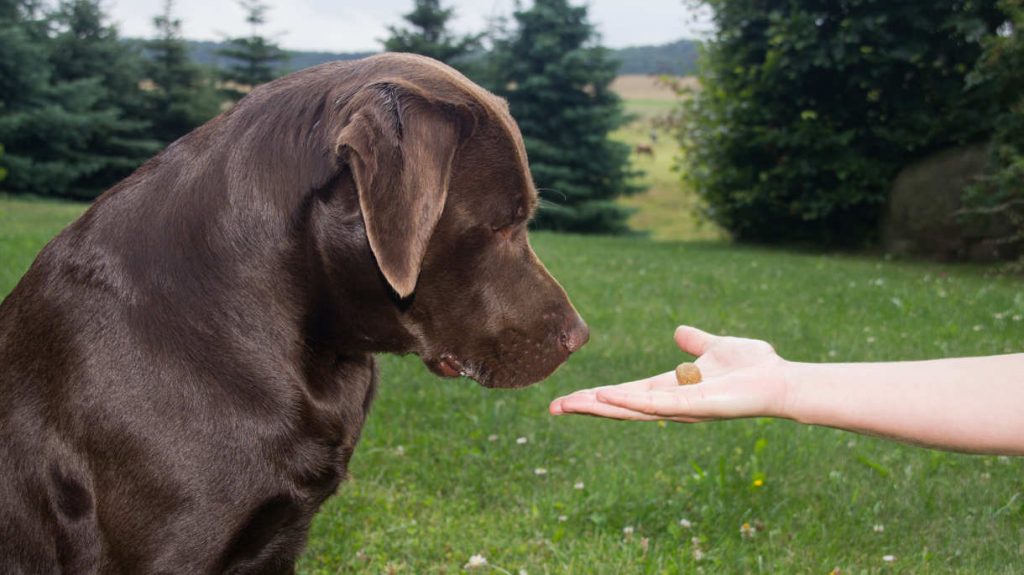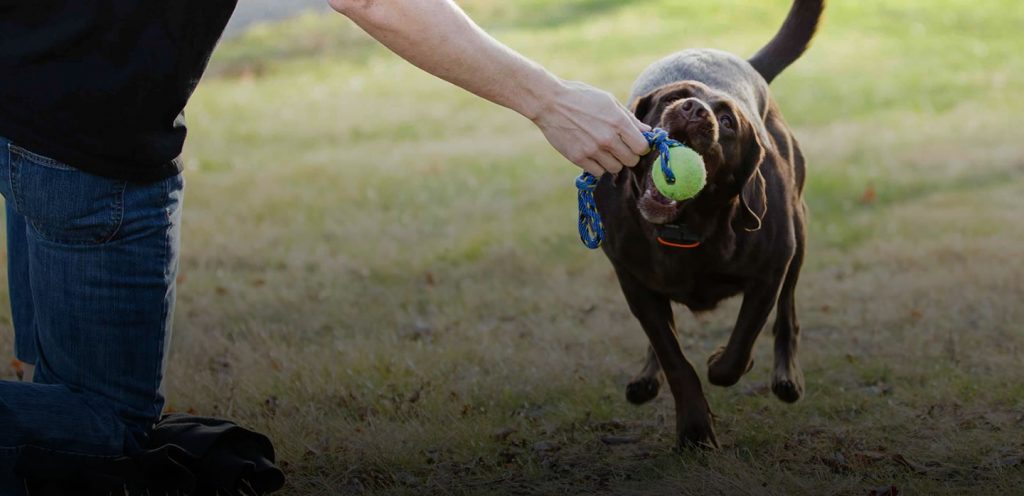Use positive reinforcement methods to teach your dog a few commands and/or tricks. “Sit,” “Down,” and “Stay” are useful commands. “Shake,” “Speak,” and “Roll over” are fun tricks to teach your dog.

Once your dog has mastered a few commands, you can begin to practice this technique. Before you give your dog anything (food, a treat, a walk, a pat on the head) he must first perform one of the commands he has learned. For example:
YOU: Put your dog’s leash on to go for a walk
YOUR DOG: Must sit until you’ve put the leash on
YOU: Feed your dog
YOUR DOG: Must lie down and stay until you’ve put the bowl down
YOU: Play a game of fetch after work
YOUR DOG: Must sit and “shake hands” each time you throw the toy
YOU: Rub your dog’s belly while watching TV
YOUR DOG: Must lie down and roll over before being petted

Once you’ve given the command, don’t give your dog what he wants until he does what you want. If he refuses to perform the command, walk away, come back a few minutes later, and start again. If your dog refuses to obey the command, be patient and remember that eventually he will have to obey your command to get what he wants.
Make sure your dog knows the command well and understands what you want before you begin practicing this technique.
The benefits of this technique
Most dogs assume a neutral or submissive role toward people, but some dogs will challenge their owners for dominance. Requiring a dominant dog to work for everything he wants is a safe, non-confrontational way to establish control.

Dogs who may never display aggressive behavior such as growling, snarling, or snapping may still manage to manipulate you. These dogs may display affectionate behavior that borders on being “pushy,” such as nudging your hand to be petted or “worming” their way onto the furniture to be close to you. This technique gently reminds the dog that he must abide by your rules.
Fearful dogs may become more confident by obeying commands. Having a strong leader and knowing his place in the hierarchy helps to make the submissive dog feel more secure.














